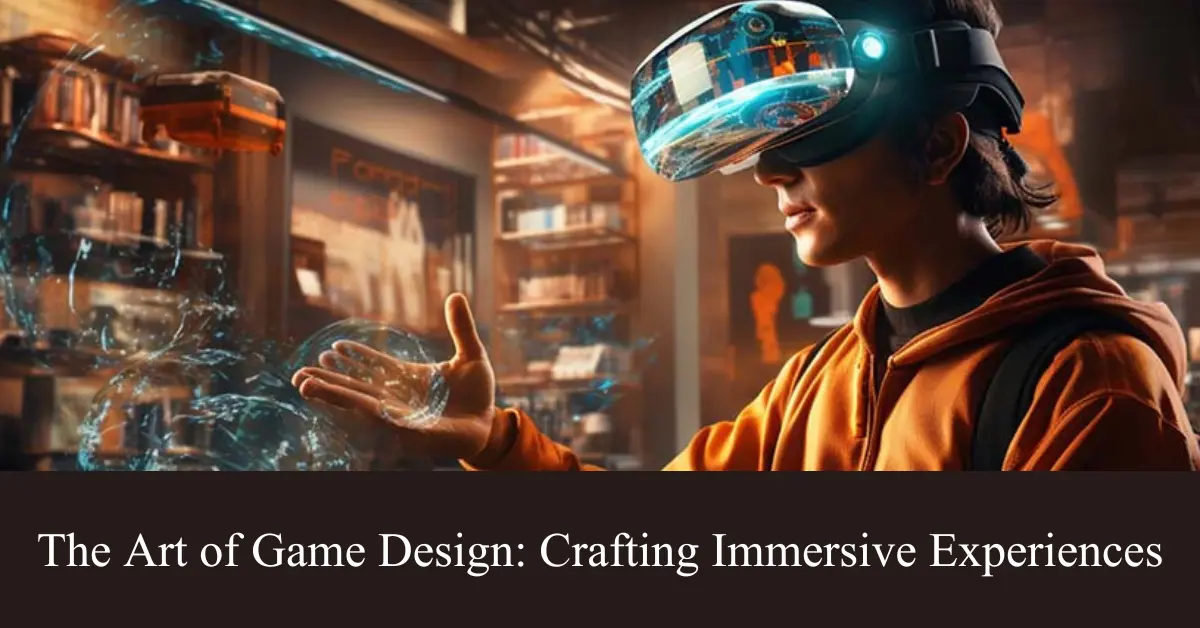
The Art of Game Design: Crafting Immersive Experiences
In the bustling world of video games, where every pixel and polygon strives to captivate, immerse, and enrapture, lies the art of game design. It’s a domain where creativity meets technology, where every line of code and every stroke of the digital brush aims to transport players to fantastical realms, to evoke emotions, and to create memories that linger long after the console is turned off.
The allure of slot pay4d games lies not just in their interactivity but in their ability to immerse players in rich and captivating experiences. From the adrenaline-pumping action of first-person shooters to the serene tranquility of exploration games, each genre offers a unique canvas for designers to weave their magic.
Understanding Immersion in Games
Immersive experiences in games go beyond mere entertainment; they engross players in alternate realities where they become protagonists, adventurers, or even gods. At its core, immersion involves suspending disbelief and drawing players into the game world through a combination of narrative, gameplay mechanics, and sensory stimuli.
Psychology Behind Immersive Experiences
Understanding the psychology behind immersion reveals that it’s not just about escapism; it’s about cognitive engagement and emotional connection. Games that succeed in immersion tap into players’ intrinsic motivations, offering challenges to overcome, stories to unravel, and worlds to explore.
Elements of Immersive Game Design
Crafting immersive experiences requires a delicate balance of various elements, each contributing to the overall tapestry of the game world.
Storytelling
Compelling narratives serve as the backbone of immersive games, drawing players into the world and giving purpose to their actions.
World Building
Detailed and believable worlds provide the backdrop for player adventures, fostering a sense of exploration and discovery.
Character Development
Well-rounded characters with their own goals, personalities, and arcs add depth to the game world, making it feel alive and dynamic.
Interaction and Feedback Mechanisms
Interactivity lies at the heart of gaming, and immersive experiences thrive on giving players agency and meaningful choices.
Player Agency
Empowering players to shape the narrative through their actions fosters a sense of ownership and investment in the game world.
Dynamic Systems
Games that respond to player input in meaningful ways create a sense of immersion by making the world feel alive and reactive.
Balancing Challenge and Reward
Achieving the elusive state of flow, where challenges are matched by skills, is crucial for maintaining immersion and player engagement.
Flow State
Flow occurs when players are fully absorbed in the gameplay, losing track of time and self-awareness as they tackle challenges with effortless focus.
Progression Systems
Rewarding players with tangible progress and meaningful rewards keeps them motivated and invested in the game experience.
Audio-Visual Aesthetics
Immersive games leverage audio and visual cues to stimulate the senses and evoke emotional responses in players.
Sound Design
Immersive soundscapes create atmosphere and enhance storytelling, drawing players deeper into the game world.
Visual Graphics
Stunning visuals bring game worlds to life, immersing players in breathtaking landscapes and intricate details.
Player Empowerment and Choice
Giving players the freedom to chart their own course within the game world fosters a sense of agency and personalization.
Non-linear Gameplay
Branching narratives and open-ended objectives allow players to explore and experience the game world in their own way.
Multiple Endings
Rewarding players with different outcomes based on their choices encourages replayability and adds depth to the narrative.
Challenges in Crafting Immersive Experiences
Despite the allure of immersion, game designers face numerous hurdles in their quest to create truly captivating experiences.
Technical Limitations
Hardware constraints and technological barriers can limit the scope and fidelity of immersive games, forcing designers to innovate within constraints.
Budget Constraints
Balancing creative vision with financial realities poses a significant challenge for game developers, often leading to compromises in design and scope.
Ethical Considerations
As games become more immersive and lifelike, designers must grapple with ethical questions surrounding representation, inclusivity, and player well-being.
Representation and Diversity
Ensuring diverse and authentic representation in games is essential for fostering inclusivity and empathy among players.
Player Well-being
Designing games that prioritize player well-being and mental health is crucial in an age where gaming addiction and burnout are growing concerns.
Case Studies of Immersive Games
Examining successful examples of immersive game design provides valuable insights into what makes these experiences resonate with players.
Examples and Analysis
From sprawling open-world epics to intimate indie darlings, the gaming landscape is replete with examples of immersive experiences that have left a lasting impact on players.
Tips for Aspiring Game Designers
For those aspiring to craft immersive experiences of their own, practical advice and words of wisdom from seasoned professionals can serve as guiding lights.
Practical Advice
Mastering the tools of the trade, honing creative instincts, and embracing failure as a stepping stone to success are essential lessons for budding game designers.
The Future of Immersive Game Design
As technology continues to evolve and player expectations soar ever higher, the future of immersive game design holds boundless possibilities.
Emerging Technologies
Advancements in virtual reality, augmented reality, and artificial intelligence promise to push the boundaries of immersion even further, blurring the lines between the digital and physical worlds.
Evolving Trends
From live-service models to user-generated content, the gaming industry is in a constant state of flux, presenting both challenges and opportunities for designers seeking to craft immersive experiences.
Conclusion
In the ever-expanding universe of poker online gaming, where imagination knows no bounds and creativity reigns supreme, the art of game design stands as a testament to human ingenuity and passion. By mastering the craft of crafting immersive experiences, designers have the power to transport players to realms beyond imagination, to evoke emotions, and to create memories that endure for a lifetime.
